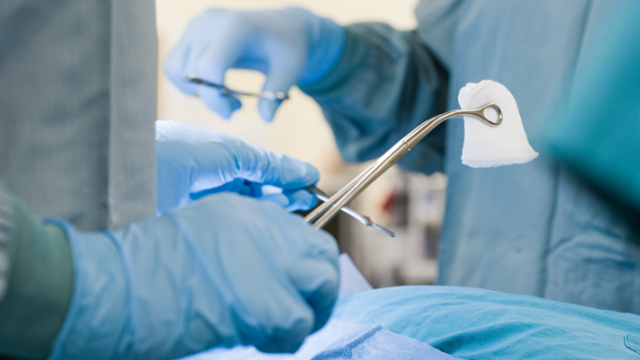
Patients’ expectations are not often met after surgery
Anterior cruciate ligament (ACL) tears are one of the most common injuries in athletes. These injuries are seen in a variety of sports, but athletes who participate in sports that involve lots of cutting movements-like basketball, soccer and football-are at a particularly high risk. Once an ACL tear occurs, the patient is usually presented with two options: treating it surgically with a procedure called an ACL reconstruction, or non-surgically through extensive physical therapy and rehabilitation. Many patients-especially athletes-decide to have an ACL reconstruction and go into the procedure with expectations that they will be able to return to their prior level of activity and avoid further injury. Unfortunately, these goals are not often met after surgery. In one study, only 65% of patients returned to their pre-injury level of sport, while 36% developed knee osteoarthritis within 10 years of surgery. But despite this information, many patients continue to have ACL surgery with lofty expectations that may not be met. To investigate this matter in more detail and better inform patients, a study was conducted to evaluate the differences in overall outcomes over five years in patients treated surgically or non-surgically for an ACL tear.
Majority of patients decide to have surgery
A total of 105 athletes between ages 14-55 years old, all of whom were involved in cutting and pivoting sports, were enrolled in this five-year study. These participants discussed whether they should have surgery or not with their surgeon and physical therapist, and 83 decided to have ACL reconstruction. The other 22 decided to have non-surgical treatment, which consisted of a physical therapy and rehabilitation program. After the program, patients in this group were instructed to follow a set of home exercises that focused on improving strength and muscular control, as well as helping them return to their former level of sports participation. Surgery was also followed up with a rehabilitation program that focused on bringing these patients back to their respective sport. All patients were assessed before the intervention began and then again five years later for a number of variables, including strength of the quadriceps muscles in the front of the thigh, a single-legged hop test and other patient-reported outcomes.
Positive outcomes occur in both groups
Five years after treatment, patients in both groups experienced positive outcomes, and the results between the two groups were found to be very similar. In particular, scores from the quadriceps strength and single-legged hop test were high and did not differ between the surgical and non-surgical groups. The same was true for the frequency of cutting and pivoting activities and the participation in pre-injury levels of these activities. Regarding overall activity levels, 61% of patients treated surgically and 50% of those treated non-surgically were able to engage in their pre-injury level of activity at five years. Patients in the non-surgical group reported scores that were slightly lower than the surgical group on quality of life, but scores were not different between groups in measures of knee symptoms or function. Finally, only 5% of patients treated non-surgically developed knee osteoarthritis by this time point, compared to 23% of patients treated surgically. Taken together, these results suggest that ACL reconstruction is not mandatory for all individuals who tear their ACL, and that positive outcomes are still very possible with non-surgical treatment, too. Therefore, if you recently tore your ACL and are currently trying to make a decision on whether or not to have surgery, keep this study in mind and have a thorough discussion with your surgeon and physical therapist. Every case is different, but it is possible that physical therapy alone may be sufficient for your condition and could help you achieve similar results to surgery without the associated risks, at a far lower cost.
-As reported in the June ’18 issue of The American Journal of Sports Medicine
